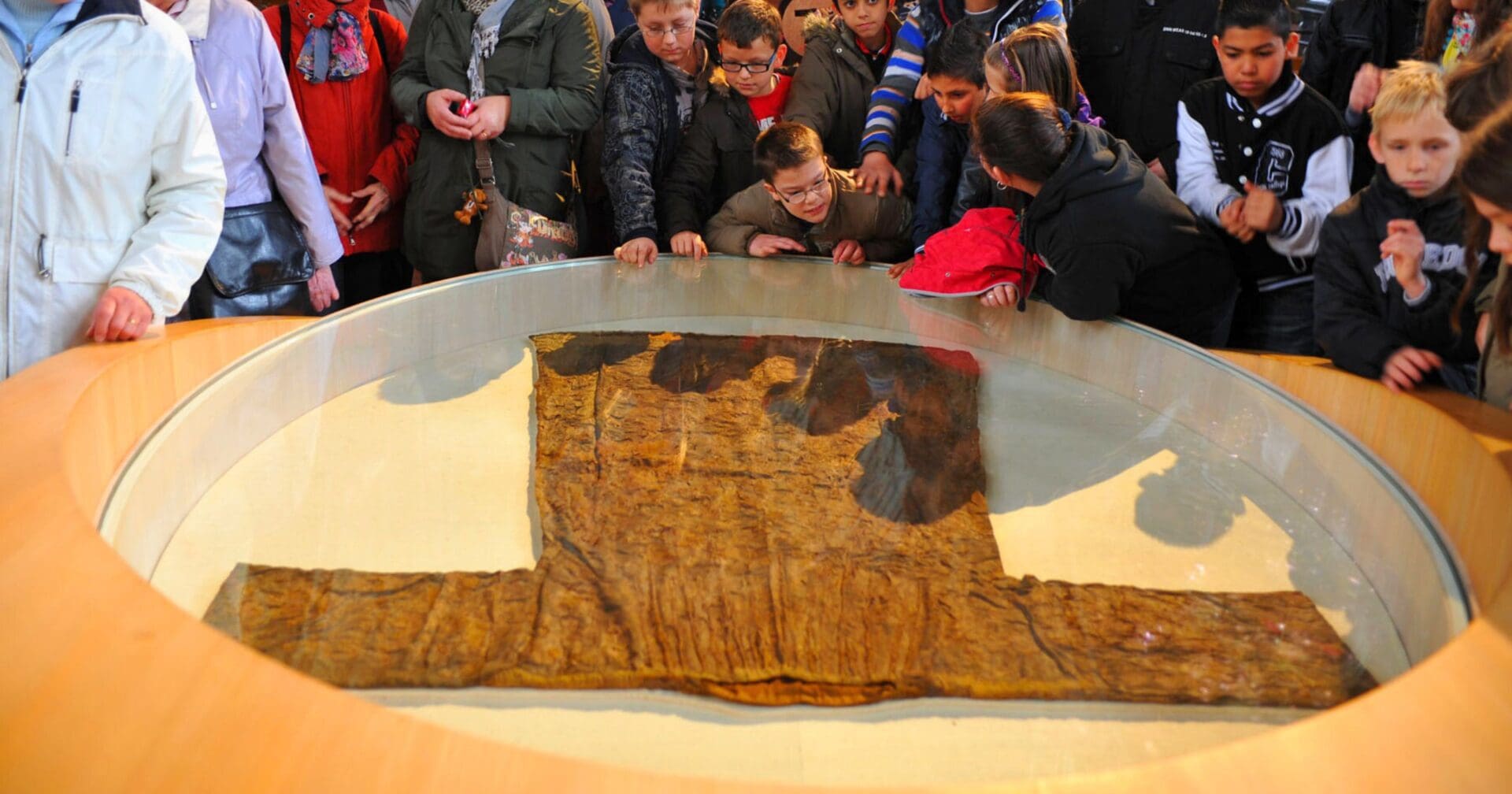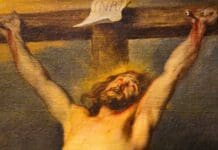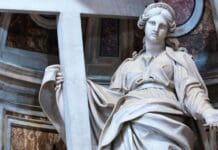Although a majority have been lost to history, some of the earliest relics of the Church still survive to this day. Of the surviving artifacts, those associated with Jesus Christ Himself have been most studied and fascinating of them of all.
Some of these include the Holy Sponge, True Cross, Holy Lance, and Holy Prepuce, the Virgin’s Girdle, and the Holy Robe of Jesus Christ, reported to be the robe worn by Jesus shortly before His crucifixion. What remains of it, and where is it located today?
According to the Gospel of John, the clothing of Our Lord was divided into four pieces by the Roman soldiers that had crucified Him. However, because His robe was woven in one piece of fabric without seams, they cast lots to determine its ownership, so as not to divide it.
“When the soldiers had crucified Jesus, they took his clothes and divided them into four shares, a share for each soldier. They also took his tunic, but the tunic was seamless, woven in one piece from the top down. So they said to one another, ‘Let’s not tear it, but cast lots for it to see whose it will be,’ in order that the passage of scripture might be fulfilled [that says] ‘They divided my garments among them, and for my vesture they cast lots.’ – John 19:23-24
According to tradition, Saint Helena discovered the Holy Robe around the year 328 along with other relics, including the True Cross. In distributing the relics she had unearthed, she bequeathed the Holy Robe to the Diocese of Trier located in Trier, Germany. Not much is known about the history of the Seamless Robe until the 12th century, when Archbishop John I of Trier had the altar containing the Robe consecrated. Throughout its history, it has had pieces of silk sewn to the cloth, and in the 19th century was coated in a rubber solution in efforts to preserve it.
Typically it is held folded in a reliquary, not available for direct viewing. However, in 1512 Emperor Maximilian I demanded to view the Holy Robe, kept in the High Cathedral of Saint Peter in Trier. The Archbishop Richard von Greiffenklau zu Vollrads arranged for the original consecrated altar to be opened. The locals of Trier heard of this, and also demanded to view the Holy Robe. After the original opening of the altar in 1512, irregular pilgrimages to Trier took place throughout history.
The last viewing of the Holy Robe took place in 2012, with over half a million making the pilgrimage to see it. In speaking about the Holy Robe and its authenticity, Pope Emeritus Benedict XVI said “This relic makes present the final dramatic moments of the earthly life of Jesus: His death on the cross.” Of the seamless and whole nature of the Holy Robe, Pope Emeritus Benedict XVI said it reflects on the ‘the unity of the Church’ and its ‘unique and indivisible community.”
Photo credit: PD via Wikimedia Commons


















I do not believe in this story
I have wondered where this could of gone….
When is the next viewing
The Sudarium, the cloth that was found in the tomb when the stone was ruled away can be seen a couple of times a year in the Cathedral at Oviedo, Spain. It had been scientifically proven to be from the same area as the Shroud containing the same blood type.
Saint Helena and her pilgrimage party actually found this tunic sealed in a jar IN A CHURCH. Her son was at the time co-emperor and had his primary residence in Trier. That is WHY the tunic was brought to Trier.
(Actually, most of the relics were in early churches and monasteries at or near the actual site and were later
taken/stolen away)
It has been carbon dated back to a 20 year span, it is of a style and weave that originated in Judea in the times of Herod, and woven in such a way as to have no seams. Actually not unheard of for the time and place.
This was the garment that lots were drawn for it.
Those who believe in the birth, life, death, and Resurrection do not need physical, tangible proofs of it. But for the others… such are still in existence.
We have lived in Germany for the past 4.5 years. The next viewing will be in 2033. We had missed the viewing of it in 2012, we didn’t move until May 2013. Germany is such a GREAT place to explore The Catholic Faith so much of it is visible with crucifixes, Madona’s The Blessed Mother etc… seen on outside public buildings. It is just breath taking!
[…] of these include the Holy Sponge, True Cross, Holy Robe, and Holy Lance. While most are familiar with these relics, many are probably unfamiliar with the […]
[…] of these include the Holy Sponge, True Cross, Holy Robe, Holy Lance, and Holy Prepuce. While many are familiar with these relics, most are probably […]
[…] of these include the Holy Sponge, True Cross, Holy Robe, Holy Lance, Holy Prepuce, the Virgin’s Girdle, and the Holy Ring. While many are familiar […]
I’m Jesus your theafs stole my written words Adam DAS moglee Cain alladan Joseph Achilles Ishmael Moses Isaiah gidian rabbi yeshua
the question is would joseph believe him if he were the living modern christ of today, i know
she does.
This has to be one of the most incredible relics that I have ever seen in my life. Truth is stranger than fiction for real. This bestows faith in my evil heart, and I shall follow the path set out by history in my endeavor of seeking salvation. I recommend all mankind do the same.